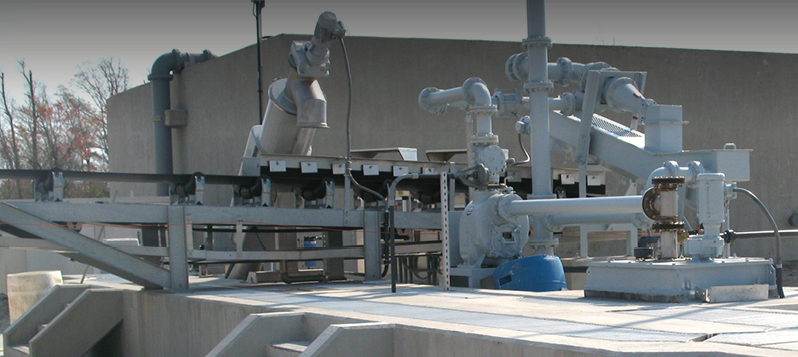What is grit collection technology? Before you can think of that, you have to think about grit. Grit is the fine particles of matter like sand, sludge, and other abrasives found that finds its way into sewers and septic tanks or that comes from rivers, lakes, and streams.
Wastewater grit is especially troublesome. It’s more than sand. It can be eggshells, bones, and coffee grounds that go down the sink. It can be the sand and gravel that washes from a street into a sewer drain. These materials are never a consistent size or shape.
Now think about the industrial settings and treatment plants that encounter grit in water or other liquids. Not only can they clog equipment, but the abrasive materials wear down parts over time. It gets costly. Grit collection technology is the equipment and processes that clear grit and other particles from water before it’s used in industrial or residential settings.
How Does a Wastewater Treatment Plant Clean the Water?
Wastewater treatment plants use grit collection technology every day. Not only must these plants remove odors and bacteria, but they also need to take the wastewater and make it clean. This is a multi-step process.
- A screw pump controls the rate at which water flows. Bearings are important to the screw pump’s lifespan, so you want quality components. Lakeside Equipment has engineers that look at the lift and flow rates you need, and consider those with the incline and required speed in order to develop the ideal pump for you.
- Screens filter all large materials like paper towels, plastic wrappers, and toilet paper to prevent damage to pipes and avoid clogs. As wastewater continues through the equipment, the screens get smaller and smaller. Screens may start with gaps of 1.5 mm and go as small as 0.06 mm. To clean the screens, there may be a trash or screen rake that automatically clears and removes the debris.
- In between the different screen sizes, there are grinders that grind the waste. The idea is to keep grinding the waste and catching it in filters until the water that passes is clean.
- There are also comminutors that capture the large material and chop it into more uniform sizes for the grinders to work with.
- Grit chambers and grit collectors are the pieces of equipment that collect the grit so it can be taken to a landfill or facility for disposal.
To get to the cleanest water possible, you need a system that effectively filters out silt and other particles. These steps are all part of the basic process. There are several systems available, and each works a little differently depending on the components you choose.
Types of Grit Removal Systems
Lakeside Equipment Corporation specializes in several types of grit removal systems. There are advantages to each one.
Aeroductor – The Aeroductor system avoids having any motorized parts that are submerged. It can be constructed from stainless steel to prevent corrosion. Its biggest benefit is that it can separate and wash grit at the same time.
Headworks Packaged System – H-PAC systems are stainless steel and prevent corrosion. It has by-pass options for the grit chamber and screen.
Grit Classifier – There are several types of Grit Classifier systems to allow you to find the best solution for your needs. A screw conveyor gets rid of grit that is ready to be disposed of. That screw conveyor is designed for strength and durability.
In-Line Grit Collector – In-line is an affordable system that uses aeration to keep particles from settling. It’s best for a system where the flow rate is under 6.0 million gallons per day. Motorized parts remain above water for easy maintenance.
Raptor – If you need a grit removal system that has a conical design where grit and particles are washed and separated with precision, the Raptor Grit Washer is a good choice. It’s made from stainless steel to help prevent corrosion. It handles a variety of flow rates and reaches grit discharge rates of 90 percent.
SpiraGrit – With SpiraGrit, you get a compact system that doesn’t take up much space. The bearings are not submerged and the components do not corrode quickly, which makes maintenance a breeze. It handles all flow rates.
What You Need to Consider
Whether you’re replacing equipment or planning a new system, you need to carefully weigh the water flow rates, longevity, and requirements. Experts can help you decide the best grit removal technology for an efficient, effective treatment system.
Would you like more information on equipment that helps with grit removal? Use the online form to get help finding the right system for your needs. You can also call (630) 837-5640.








